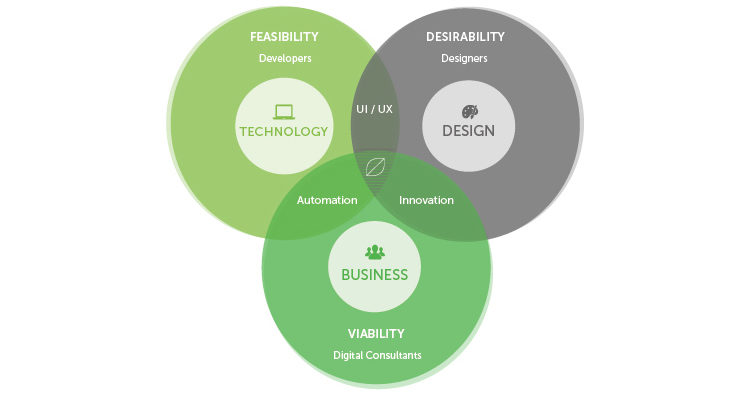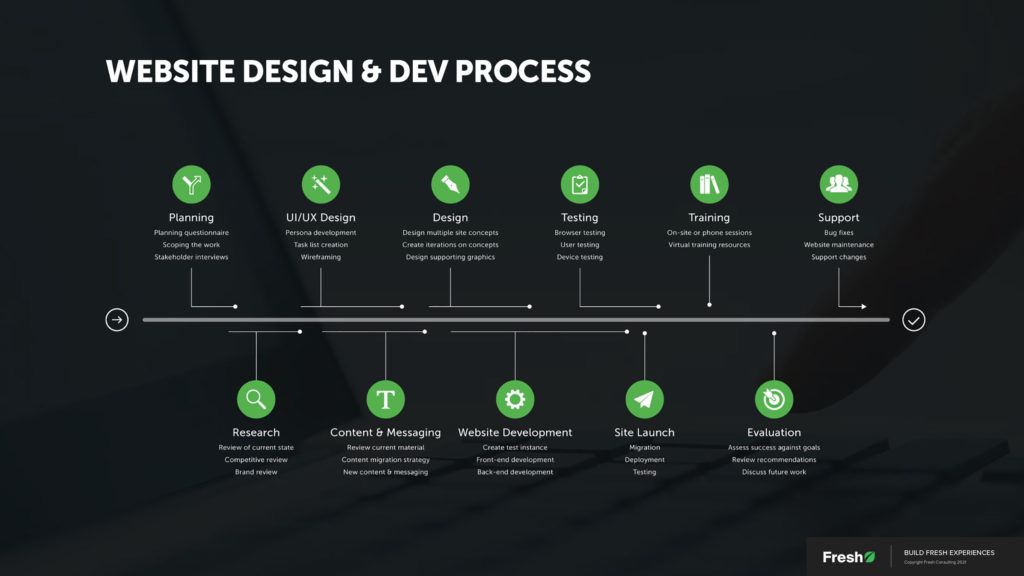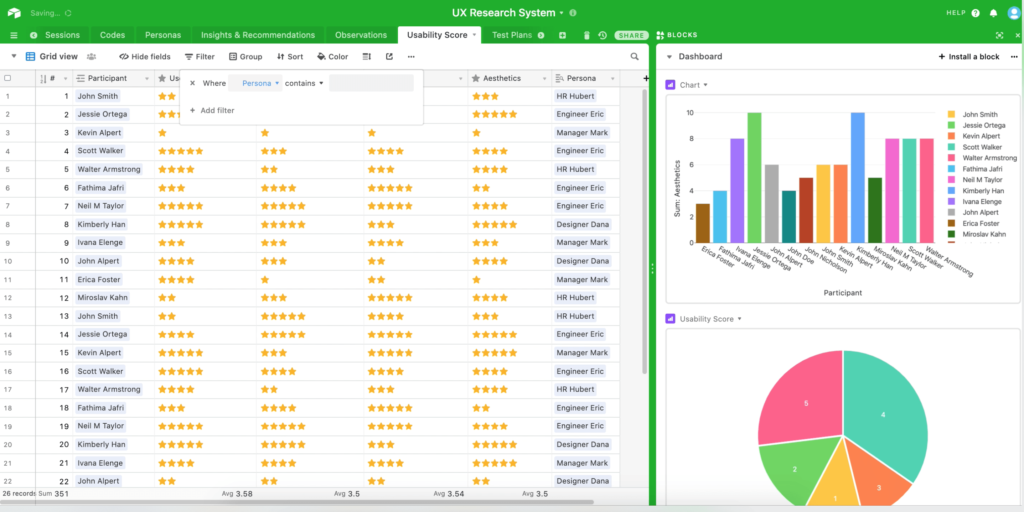Article
Why Websites Need a Holistic Approach to Be Successful

Executive leadership, marketing, and IT often have different priorities, but they almost always agree on one thing: creating a website can be a beast of a project… What is our story? Does it make us look good? Is it user-friendly? Is it integrated into our sales and operations? Does the messaging resonate with our target audience? There is a lot to cover and even when priorities and goals are clear, it can take months, sometimes years (so we’ve heard), for companies to build something right on their own.
We recently talked with a 20M company whose site painfully took two years to build with another company (ouch). Every month the website failed to go live cost them in lost opportunity and profit. In spite of the two years spent building tons of pages, the finished website delivered a poor experience, further hurting online global perceptions and sales.
What happened? While the company worked heavily with an external developer in coding the site, they forgot the ten other aspects that go into a successful website. The contracting company underbid the project and then delivered a single developer to help execute. People without design experience were in charge of design, and there was no help on messaging. The wrong infrastructure plagued the project and both the client and contractor underestimated the effort, making for a painful relationship throughout. Elements of this story may be familiar if you haven’t taken a holistic approach to building a high-end website in your past.
Holistic Full-Service Approach vs. Fragmented Approach
At Fresh, we believe that a full-service holistic strategy is the best way to address user experience and get the website right the first time…whether that’s with your team, ours, or a hybrid approach.
Put simply, holistic website creation dictates that each piece of the process matters to the success of the project. A website contains many design, technical, and business parts, all of which must be included in the plan and the process. Neglecting any one part has an impact. For example, on the front-end, poor copy and messaging can kill an experience. So can poor graphics. So can poor performance/speed. So can poor layout. So can poor navigation and information architecture. So can poor calls to action. So can poor interactivity. And that’s just the front-end.
Our most basic holistic process for website design and dev is shown below and we have additional processes for heavier UI/UX projects, brand identity projects, and motion graphics that can be integral to website success. Note that the actual “Website Development” is only 1 of the 11 areas of consideration below.

Without a holistic approach, website projects suffer. For example, strategies focusing on the user experience but not the technology infrastructure and business processes may not help the website or business scale, while a plan that centers on the technical perspective might not deliver an experience that connects with its target audience, losing out to competitors.
Creating a website is definitely an investment of time and dollars, but when executed well, it can easily pay off in customer conversion, employee attraction, brand amplification, and sales process automation…to name a few overarching key benefits one can expect.
In the process of doing it right, much more than code gets reviewed and impacted: Messaging, story, and value proposition. Sales and marketing collateral. Integrated business productivity tools. Customer targeting and analysis. Business processes and technology integration. Technology frameworks and infrastructure. Brand story and Employee Connection. Every one of the aforementioned components can tie to a website project and to the business with positive short and long-term impacts.
Nuff said, beyond a holistic process, what else goes into a holistic approach? The following 3 key areas articulated below merge the essential technical, creative, and business aspects of a successful website project.
// DESIGN – Holistically Designed Customer Experiences
A website is both the face of your company and a brand connection to anyone who doesn’t visit your offices. It might be the only touchpoint for the majority of your potential customers and employees. So how do you approach creating an awesome customer experience?
Impactful Messaging that Centers on Storytelling. All content and messaging needs to be consistent with your brand messaging and brand story to reinforce who you are and what you have to offer in a way that connects with people. Stories are key because we buy from emotion.
High-end Graphics with Meaning. High-end graphics play a big part in impactful experiences that resonate. Graphics should give the content more meaning and save you from writing unnecessary text. That means spending time choosing imagery and creating graphics that fit the visual narrative, not just dropping in some stock photography.
Elegant Motion, Video, and Subtle Interactivity. Elegant motion and subtle interactivity can make an interface more intuitive and more exciting. Drawing a user into the experience can be done more easily with purposeful animations that create a desire for more discovery. Video also helps amplify your message in a more engaging manner.
A Strong Layout, with an Efficient Information Architecture. Data-driven UI strategy (from personas, user stories, and focus groups) should be carefully packaged in design that makes your site easy to use while still getting your value proposition across and positioning your brand in a positive light.
// TECHNOLOGY – Holistic Technical Architecture Planning
Tech Stack. There are front-end technologies, back-end technologies, and sometimes middle-tier technologies, to consider that can speed up a website project or slow it down. Your own technologies and whether you have proficiency or the availability of other developers should be considered. Decisions around content management systems can have huge ripple effects.
Performance. Google recently pointed out how important this is by indicating performance will affect search rankings. Your site needs to be fast, and that means evaluating all layers of the tech stack to see what needs to be improved. Actions like optimizing JavaScript and using a CDN add up to make a faster site. Faster sites not only improve the experience, but can also lower bounce rates.
Integrations. Good websites are integrated with other systems that a business uses. For example, at Fresh, we tie our website into at least 5 other systems. Analytics, CRMs, customer data, user feedback, customer service, application processes, customer portals, employee portals, and ticket management are all samples of other systems that can be integrated into your website. Take a look at CloudSurfing.com to get a sense of the thousands of Saas products and the APIs at Programmable Web to get a sense of the world of integrations.
Back-end CMS / Admin. Content management systems make maintenance easier. It can be burdensome for marketing and business team members to route simple edits to developers. Rather, basic edits must be able to be done easily in-house, unless you want to have a developer upload new photos and make edits to employee bios. We use many CMS’s but platforms like WordPress give multi-dimensional value: customization, user-friendliness, and reasonable setup and maintenance costs.
// BUSINESS – Holistic Business-Facing Considerations
Whether a site is B2C or B2B, features that don’t work well or aren’t provided can damage the customer experience. If a customer submits a request or places an order that isn’t efficiently received and tracked, direct loss of trust and subsequently business can occur. Businesses that utilize technology to automate and streamline processes can enhance operations, and websites are no exception.
Workflow Planning. How does the existing funnel help the sales team, marketing team, support team, or other operational teams? …and how could it be enhanced? Sales and marketing workflows, customer support workflows, employee recruiting work flows, and business operations work flows should be analyzed to see how the website could tie in or support.
Insightful Analytics. A site needs to be set up and compatible with tracking and analytics that can be extracted and interpreted in-house by those in charge of marketing. This requires understanding your customers and setting up some key metrics to evaluate success.
Connection to Digital Channels/Strategy. A website is one of many channels in digital marketing today. How does it tie to your campaigns, your advertising, your existing marketing efforts, and also help you measure what is working?
A Holistic Approach Pays Off
Starting with a 360-degree project view from the design, technology, and business lens will mean fewer details get missed along the way that could derail the project benefits and timeline.
Including the right stakeholders from the beginning can also help provide a holistic approach. Marketing, sales, and customer support teams often have a lot to contribute to the design and customer experience, the IT team often contributes for the technical aspects, while leadership, operations, and sales often have perspectives for the business aspect. This is where an independent party can be helpful in coordinating inputs and keeping opinions balanced.
As you start planning your new site, be sure to be holistic in your approach when planning for the effort required of your team and when comparing proposals from companies that might be involved in helping out. There is a big difference in what companies offer and what you get once a proposal is signed. For example, are they doing any UX design work and providing customer insights? Do they care about the business strategy and prior analytics? How will the new site support the sales team and continue to bring value in the future? What are the plans for content migration, testing, and training? How will the site be updated? The best web design companies will have the answers — and solutions — to these questions.
The effort associated with a full-service offering is vastly different from simply coding up some designs. Starting with a holistic process and executing a holistic plan centered on your company’s goals will benefit your business long after launch.








